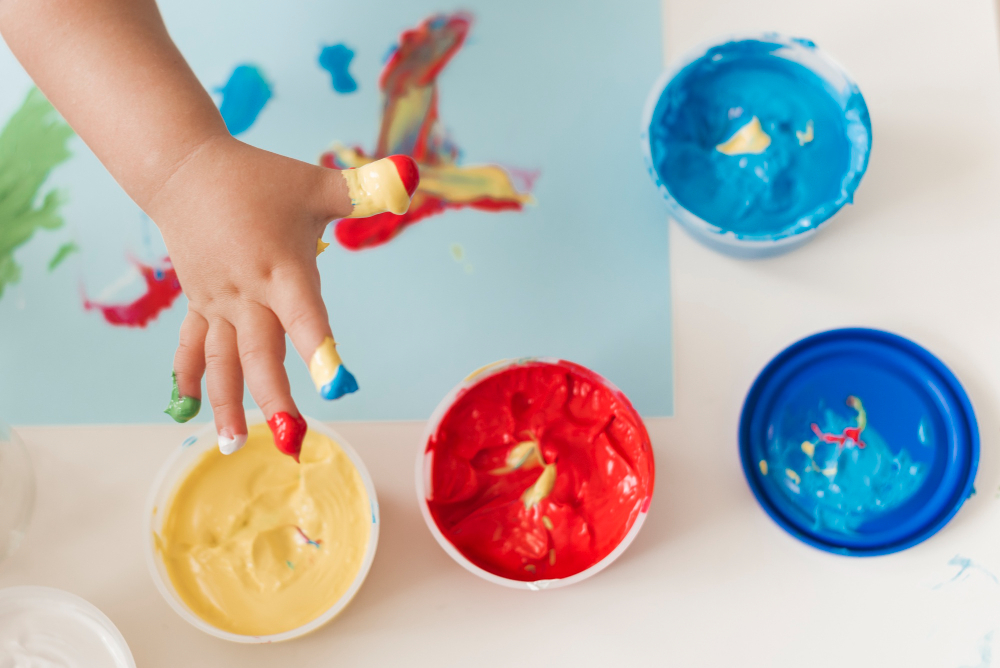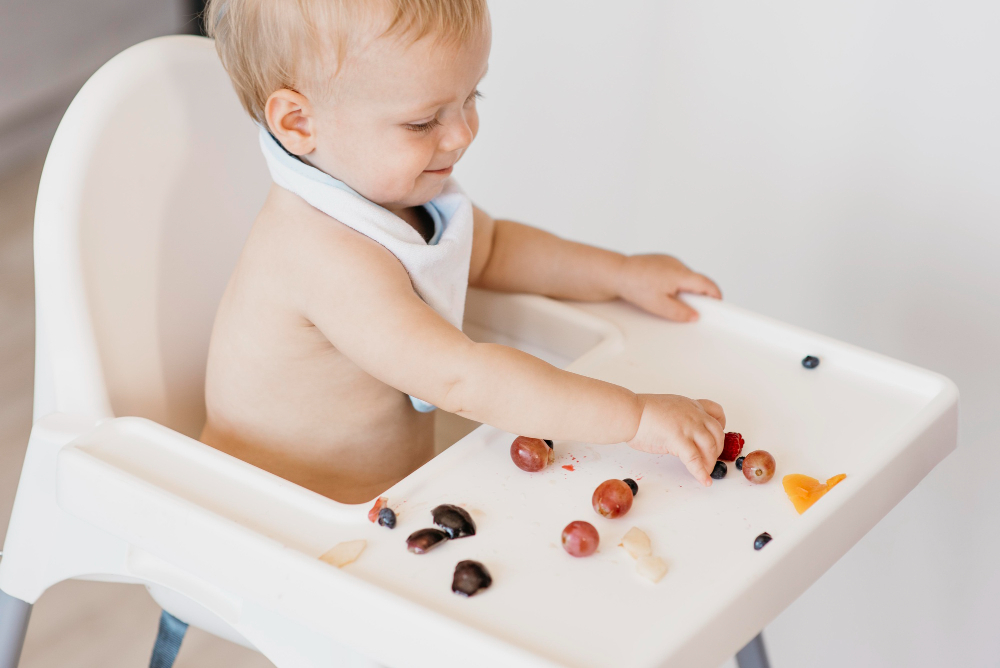20Nov
Sensory Integration
From the moment a baby is born, their brain embarks on a journey of growth and development. A fundamental aspect of this early journey is the exploration of sensory input and the subsequent integration of these experiences. But what exactly does this involve? And why do we as new parents need to know about it? And how do we go about it?

What is Sensory Integration?
Sensory integration is a fundamental concept in early childhood development. It is the process through which infants and toddlers take in, organise, and make sense of the sensory information they receive from their surroundings. This sensory information includes what they see, hear, touch, taste, and smell. Essentially, it is how they begin to understand the world around them.
Sensory integration plays a pivotal role in a child’s early cognitive, emotional, and physical development. Every interaction with their environment becomes a building block for more complex skills. For instance, as babies explore the world around them, their senses act as pathways for information that lay the groundwork for more sophisticated learning. This intricate process helps in motor coordination, language development, and social interactions. It’s not just about recognising that a ball is red, but also understanding how it feels, what it tastes like when accidentally bitten, or how it bounces. All these sensory experiences help infants and toddlers develop their understanding of cause and effect, as well as grasp spatial relationships and the properties of objects in their environment. This early groundwork paves the way for more advanced learning and problem-solving as they grow.

Why is Sensory Input So Crucial for Babies and Toddlers?
The first few years of life are pivotal for brain development, and sensory input plays a vital role in this process. Infants and toddlers enter the world with an astonishing number of neurons, and these sensory experiences help build connections between these brain cells. These connections, or neural pathways, are the foundation for learning, memory, and cognitive development.
Sensory experiences are equally important for physical growth. As babies and toddlers interact with their environment, they develop their fine and gross motor skills. Activities like crawling, reaching for objects, and eventually taking those first steps are all a product of sensory input and motor skill development.
Beyond cognitive and physical growth, sensory input profoundly affects emotional regulation. Babies often explore the world by putting objects in their mouths or feeling different textures. This oral and tactile exploration can have a calming effect, which helps infants manage their emotions, soothing them when needed.
Moreover, sensory input has a direct impact on language development. When babies and toddlers engage with sensory-rich materials like soft toys, textured books, or musical instruments, they associate words with these sensory experiences. This deepens their understanding of language and expands their vocabulary.
Sensory play also promotes social development. Engaging in sensory activities with peers or caregivers teaches children important social skills, such as sharing, taking turns, and working together. This aspect of sensory play is crucial for building the foundation of future social interactions.
So, as our babies explore the world around them, their senses are acting as pathways for information that lay the groundwork for so much more complex learning in the future. By recognising the significance of sensory integration and actively engaging with it, we as parents and caregivers can provide our little ones with a solid foundation for their overall development.

How to Incorporate Sensory Integration into Your Baby’s Schedule?
Tummy Time: Placing your baby on their tummy for short, supervised periods each day encourages them to lift their head, developing neck and upper body strength while allowing them to experience different textures as they begin to reach out and grasp for whatever you put in front of them. Ideas include a tray of water with orange slices / taste-safe sand (crushed biscuits) / chia seeds with a drop of water or jelly. Stimulating their eyes, hands and all being safe for them to taste without concern over choking.
Texture Exploration: Offer a variety of textured materials during playtime for your child to touch and explore, fostering tactile sensitivity. You can start with soft fabrics, bumpy toys, or smooth surfaces for little ones, and move to more exciting explorations as your little one becomes a toddler. Think taste-safe paint / coloured ice blocks / soap and water / cooked and uncooked pasta or chocolate pudding.
Sensory Bins: These imaginative play spaces can be filled with a variety of materials that allow your child free play to scoop, pour, and immerse themselves in tactile exploration of cause and effect. Pinterest is filled with fun, themed ideas, but our favourites at home include coloured rice and funnels / taste-safe sand and buckets / coloured water, ice and bowls / shaving cream and paint brushes / chalk and water. Let your imagination run wild!
Outdoor Adventures: Nature itself provides the perfect sensory playground. Take your child outside to feel the grass under their feet, run in the rain and jump in muddy puddles, listen to the birds, and collect leaves, flowers and rocks. These experiences engage multiple senses and offer rich opportunities for exploration and fun. Plus nature is the perfect canvas for crafts. Once you have collected your treasures, take them home and turn them into something creative!
Musical Play: Encourage your child to play with musical instruments, dance to the rhythm of music, sing songs in the car and experiment with various sounds around the house. Musical play stimulates hearing, rhythm, and movement, engaging multiple senses.
Scented Playdough: Homemade playdough with various scents engages your child’s sense of smell and touch. Plus has the added benefit of being a great tool to use for sensory eltdowns. A bit of lavender oil in playdough does wonders for self-soothing.
Artistic Adventures: Engage in creative sensory art activities. Finger painting, using different textured brushes, or creating collages allow children to explore various materials and develop their artistic and sensory skills. And don’t think this is only for older kids. A bit of food colouring in plain yoghurt provides the perfect taste-safe paint for your babies.
Water Play: Water activities, whether during bath time or using water tables, offers a unique sensory experience. Splashing, pouring, and experiencing water with different additions gives endless opportunities for fun. Add a drop of colour to your little one’s bath / make coloured ice cubes / hide toys in ice blocks and let them melt in the bath / bubbles / washing toys with soap and water. The opportunities are endless!
Cooking Together: Baking or cooking with your child introduces them to different ingredients, textures, and smells. In addition to being a sensory-rich experience, it’s also a wonderful bonding activity. Allowing your little ones to play with their food so to speak, gives them confidence when it comes to tasting new flavours. They will be more inclined to taste something green if they have been involved in the making of a meal or see the new ingredient in a non-stressful play manner.
Safety and Supervision
While sensory play is essential, safety is paramount. Avoid small objects that could pose choking hazards and ensure that the materials you use are non-toxic and age appropriate. Always supervise your child during sensory play activities, especially those involving water or small objects. Your active presence ensures both safety and the opportunity for enriching bonding interactions.
Ultimately, by creating a sensory-rich environment and engaging in activities that stimulate their senses, you’re not only supporting your little one’s immediate growth but also providing them with a strong start on their journey of discovery and development. It’s a journey filled with wonder, curiosity, and endless potential.
